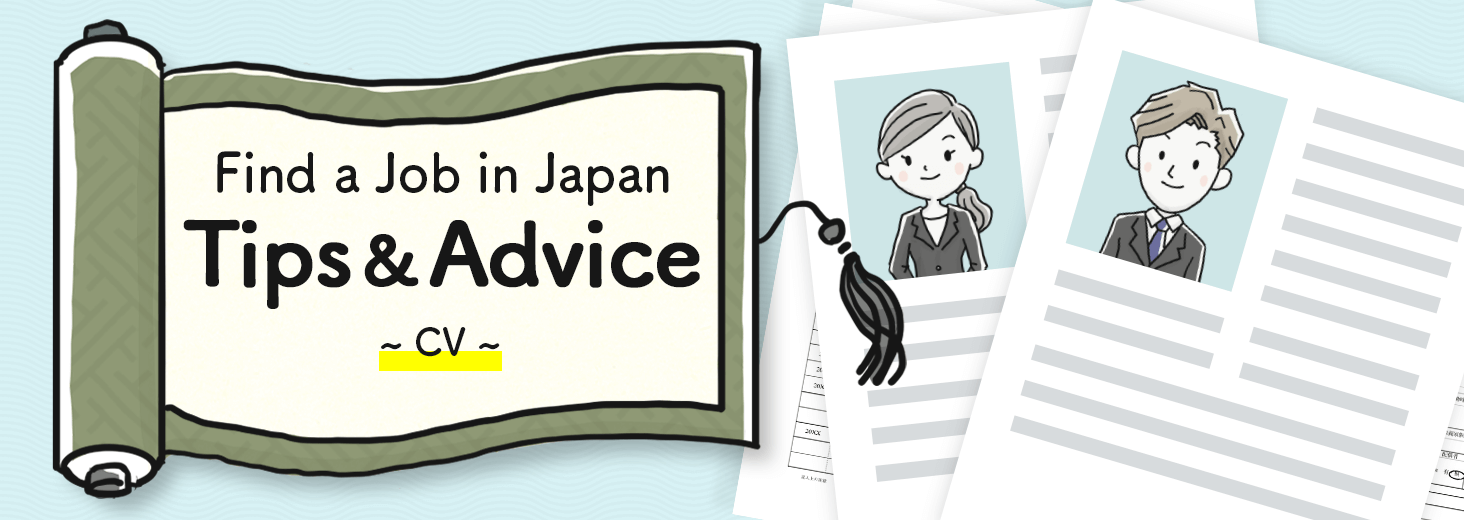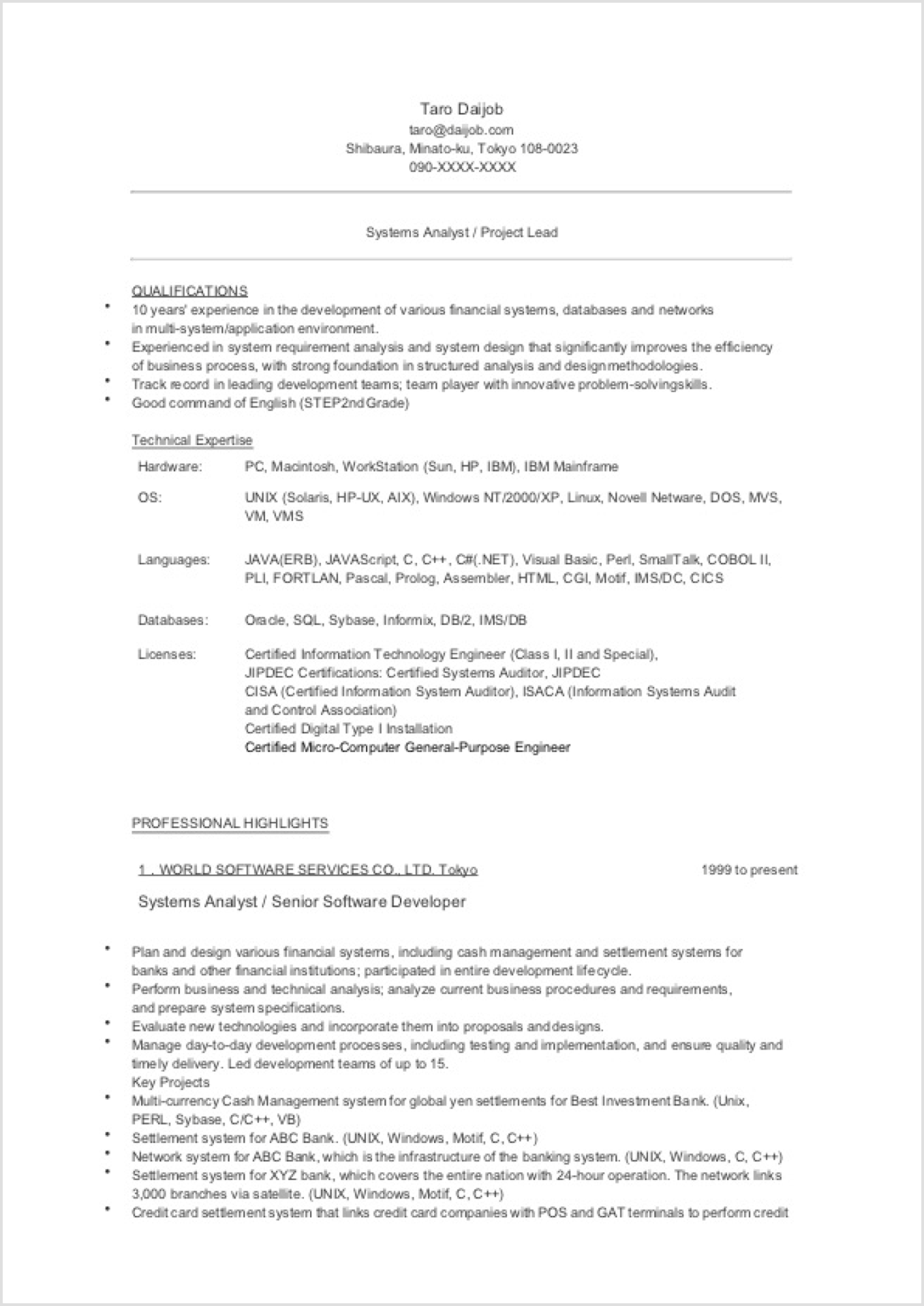Global Career Guide



3. CV
When applying for a position at a foreign company or a company with a foreign team leader, English resume (CV) is the first document employers look at. You should not rush with creating your CV and make sure to put in the time and effort.
(1) Writing Points
point 1 Keep things simple and concise
Try to keep your CV to one A4 page, three A4 pages at most. When writing, omit the unnescessary particles and personal pronouns except when the meaning is ambiguous. It is advised to omit ""I"" or other personal pronouns and start sentences with verbs. Time should be past or present and consistent throughout the whole document.
- Omitted fixed and indeterminate articles such as "the" and "a /an"
- Pronouns such as I, me, you, they, we, us, etc. are omitted.
- Start a sentence from a verb
point 2 Write numbers in Arabic numerals
Use Arabic numerals to focus the reader's eyes on the performance numbers. Ususlly one-digit and first-digit numbers are spelled out ("five years"), but in resumes, arabic numbers such as "5 years" are more common. For terms such as "over" or ""more than"" use "+" instead, e.g. "20+ years" instead of ""over 20 years."
point 3 Unify fonts
There are two main types of fonts used in business documents. For Japanese we have Gothic and Mincho and for English there are Serif and Sans Serif fonts. For Sans Serif, Arial would be the go-to font. As for Serif fonts, it is better to avoid Century and go with the classic Times New Roman. *"Serifs" are the small details on the ends of strokes in some fonts.

(2) Basic writing style
The English curriculum vitae is a combination of the Japanese resume (rirekisho) and work history (shokumukeirekisho), and generally consists of the following six elements. The order is usually as follows, but you can change it to an extent, according to the experience and skills that you would like to highlight.
① Contact Information
- Describe basic personal information. Enter the name, address, date of birth, and contact information (telephone number, e-mail address).
② Objective
- Personal information: name, address, date of birth, and contact information (telephone number, e-mail address).
③ Professional Summary
- Briefly write down the projects that you were a part of and decribe the measures that have been implemented.
- Use particular results to describe your achievements and acquired skills (e.g., ●●●% productivity improvement, cost reduction of ●●●% , rewards, etc.)
④ Work Experience
- Write a brief summary of your work experience. (If you are currently in office, enter "XX/XX/20XX-present".)
- Write down the type of employment (Full time, contract, temp etc.).
- Include part-time work experience and internships.
⑤ Education
- Enter your academic background and qualifications along with your graduation date and the date of acquisition of the qualifications.
(3) Formats and recommended styles
The three styles of English resumes are called "Chronological""Functional" and "Combination." Choose a format that matches your experience and will help you make the best impression.
① Chronological CV
This is a format that follows the traditional time line of your career, starting from the oldest one. It is the basic format that copies the timeline in the resume and is easy to understand, which makes it the most favourable with Japanese HR representatives.
② Functional CV
This is a format that lists your career experiences starting from the most recent one. It is commonly used for English resumes and is well-liked at foreign companies. It is recommended especially for IT engineers and other candidates who want to emphasize their latest work experience and skills, as well as those who work on a project-by-project basis.
③ Combination CV
This form is a combination of the Chronological and Functional styles and is used in order to emphasize specific experiences and skills. You can first emphasize the skills and experience that are most relevant to the position that you are applying for and then write about your career in more detail.
(4) Download samples and formats
Format
-
・Chronological CV
Word


